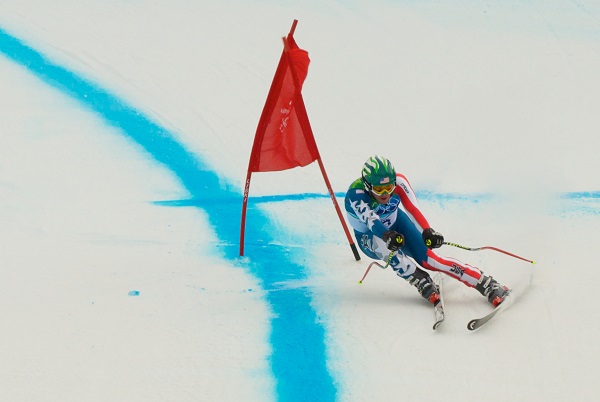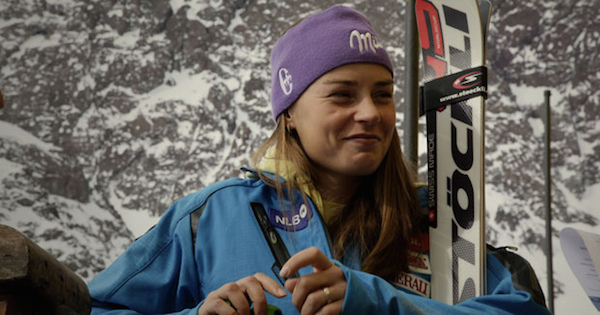Alpine Skiing, consists of four main events in the Olympics: Downhill, Super-G, Giant Slalom, and Slalom. Each discipline is similar in concept to the others. The winner is the athlete who can make it down the mountain through a course designated by some type of flag in the least amount of time. The events are differentiated mainly by how steep the slope is and how tightly winding the designated course is. No matter which event you are watching, there is a single detail that you can watch and comment on which will make you sound smart during the Winter Olympics. In Alpine Skiing, this is how quickly a skier makes it through the top of the course.
This post is one in a series of posts about the Winter Olympics that arm the casual viewer with a single tactic to sound smart while watching each event. Focusing on these details may also make your viewing experience more enjoyable
In Alpine Skiing, like some other Winter Olympics sports – Bobsled, Luge, and Skeleton, as well as Long Track Speed Skating – a running clock tracks each athlete’s progress throughout the race. Only at certain spots on the course, however, does the racer’s time get compared to all of the other competitors’ times before her. These moments are called “splits.” The trick in Alpine Skiing is to focus on the first split which measures how fast a skier has gotten through the highest part of the course.
Time on the first split is highly correlated to overall time on the course and therefore, who is going to win. At first glance, the top part of the course may not seem like the most important or the most exciting. It’s usually not the most challenging or steepest part of the course. It doesn’t have any of the most dangerous corners where racers, especially in the Downhill event can wipe out spectacularly. So, why does it give us such a strong clue about who is going to win?
Imagine that, instead of a skier with agency, Alpine Skiing events were actually run by marbles or some other inanimate object that the Olympic Athletes simply placed at the start of the course and gave a tiny push. The exact route the marbles took at the top of the course would almost completely define how the marble completed the rest of its trip to the bottom. A little too far to the right at the top and you can imagine a marble bouncing way off to the side and not being able to stay within the defined course. Skiers, unlike marbles, are able to make adjustments part of the way down the mountain, but these adjustments are limited and costly. No matter how strong a skier is, their ability to course correct is limited by the incredible force they generate going downhill at 30 to 60+ miles per hour. Sometimes a skier will go off course or crash because they took the turn three turns ago a few inches too far to the right and the cumulative effects of this mistake are too difficult to undo. If they are able to course correct, they will do it at a cost – any side-to-side correction is going to slow them down, something they can’t afford to do and have a chance at winning. So, the precise route or line a skier takes at the top of the course has an outsized impact on how fast they will be able to go in the middle and bottom of the course.
There is another slightly cynical way of looking at the top of the course. The first split is the first time each skier is compared to all the other skiers. The better skiers will probably be going faster at every split throughout the course. Every split necessarily includes the first one! So, if you watch and comment on the first split, you will seem clairvoyant!
Thanks for reading and enjoy the Games,
Ezra Fischer



